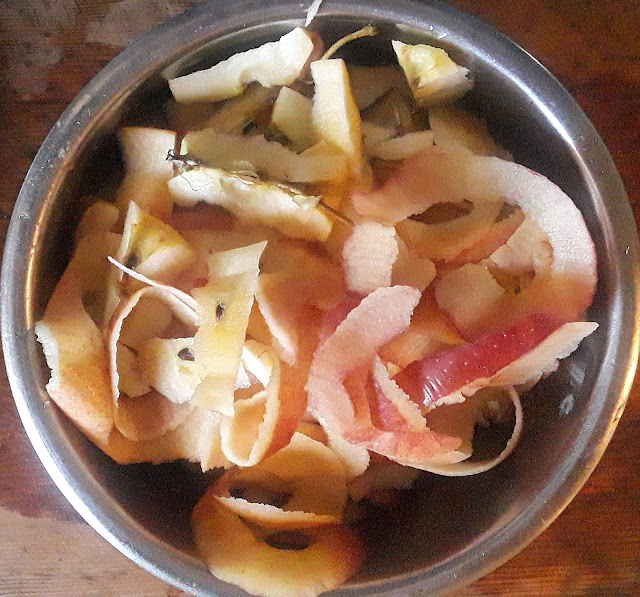This year I have decided to get a little more serious about my seed saving efforts. Seed saving isn't terribly complicated for most plants and every crop will go to seed eventually if given the right conditions. There are things to consider like cross pollination with unwanted varieties, but for the most part I keep things simple enough that it really isn't much trouble for me. It also helps that I never liked pulling finished or overgrown crops so many things go to seed purely out of neglect on my part. Because of this I didn't even need to plant lettuce, radishes, dill or cilantro this year. All of those crops reseeded themselves without any help from me.
One of the most important notes about seed saving is that whatever seed you collect should be as mature as possible. Seed collected before it has "ripened" will likely not germinate, so I try to leave fruits on the plants as long as possible before I harvest them for seed. Another thing you want to be sure is that you are collecting seed from heirloom, open pollinated varieties. This will ensure that your plants will produce offspring that are like the parent plant, unlike hybrid varieties which may produce offspring that do not have all the same traits as the parent plant.
One of the first seeds I collected this year were from last year's overwintered spinach. They bolted early in the heat of summer and were heavy with seed by July. When the plants were good and dry I simply went down the row with a bowl and knocked off the seed heads with my fingers. I laid out the collected seeds on a paper towel for a few days to let them dry out a little more and then put them in a jar for storage.
Later in summer the lettuce bolted and a few weeks later they had produced hundreds of flowers. The tiny yellow flowers gave way to tiny tufts of cottony seed parachutes ready to carry the lettuce seeds to their next destination. I went through and gathered seeds from the different varieties and separated the cotton from the seeds before storing them away in jars.
I was surprised to find that I had also let some turnips get away from me and they made plenty of little seed pods while I wasn't paying attention. I gathered the pods after they had dried on the plant and one by one cracked them open to remove the little round black seeds.

Some plants like tomatoes need an extra step in their seed saving process. Fortunately tomatoes are one of those crops that you get to eat and save seeds from at the same time. I always try to save seeds from the nicest looking tomatoes that ripen the earliest. To save the seeds I first scoop them all into a jar and cover the seeds with water. Tomato seeds have a protective casing that needs to come off before the seed can grow. Soaking them in water for a few days helps to break down that casing. Also, any infertile seeds will float on water, so it is also a good way to separate them from the fertile seeds which sink to the bottom of the jar. After soaking them I give them one last good shake in the jar and then rinse off all the extra debris. They then get spread on a towel to dry for a few days before finally getting stored in jars.

Cucumbers follow a similar process to tomatoes, but cucumbers should be well beyond the eating stage if you are saving seed from them. I leave the nicest shaped fruit on the healthiest plants until they are yellow and firm. To harvest the seeds I cut them in half and scoop out the seeds into a jar. There I put them through the same soak and rinse cycle that the tomatoes went through before laying them out to dry.
This year I also had some carrots that went to seed unintentionally, but once I noticed they were growing seed heads I decided it was best to let them finish what they started. Carrots are usually biennial which means that they will produce seed in their second year, but I think I had a couple carrots get ahead of themselves this year and they went to seed in their first year. I harvested the seeds heads after the first frost when the plants had begun to dry out and brought the seeds inside to dry out further.

There are things that I won't be saving seed from mostly because they cross pollinate too readily and I grew multiple varieties in my garden this year. Peppers are one of those things. I grew varieties of sweet bell peppers and spicy jalapenos that would produce unpredictable offspring that could have a mixture of traits. Another crop I don't save seeds from are my summer squash. I grew three different kinds this year and their offspring would probably be a funky mixture of all of them if I grew them out next year.
The seeds I have saved will hopefully germinate well for me next spring. By saving my own seed I am helping to preserve some genetic diversity in these crops while also acclimating them to my specific climate. I can swap these seeds with other local gardeners and together we can help these heirloom varieties continue to thrive.

















































